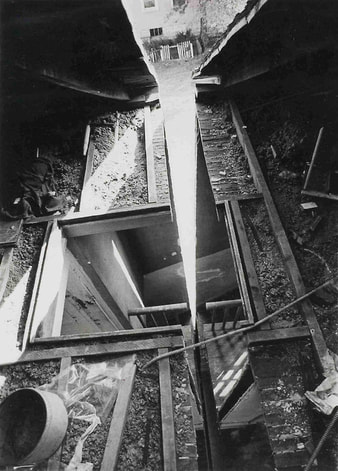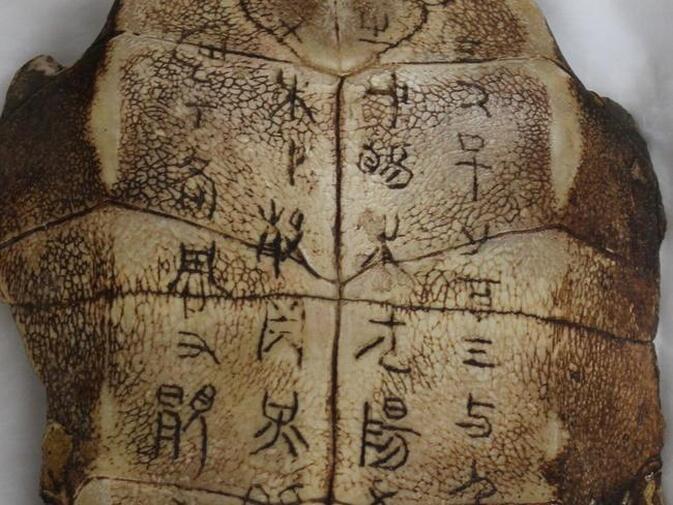|
Plastromantic Pipe Dream Plastromantic Pipe Dream is a painting about probing the unknown in search of a connection to something greater. The painting has two primary sources. The first source is plastromancy, an ancient Chinese method of divination where characters were inscribed on the plastron (the belly side of the shell opposite the carapace). The marked shells were then exposed to heat until they cracked. The diviner would read the cracks to divine the future. The second source of the image is a photograph from Gordon Matta Clark’s 1974 piece Splitting. In this work Matta Clark divided a different kind of shell, a small suburban home, into two pieces. While the artist doesn’t crack the house for the purposes of divination, he does connect with something more universal, transforming the house into a kind of sundial. I began with a shell of my own, an antique picture frame. I ground the frame into two square brackets to loosen containment and to suggest that the action on the painting’s surface would spill over into, and affect reality around it. I painted the flesh of the image red and enclosed it in a skin of beeswax and spray paint. In an act that felt sacrificial I tore into the surface with a crude stylus revealing the crimson below. The image I inscribed was based on Gordon Matta Clark’s work, Splittng. I lit the blowtorch and applied heat to the plastron-like waxy surface, splitting apart the image in melting wax, hoping for a sign. References:  http://i.huffpost.com/gadgets/slideshows/348160/slide_348160_3701456_free.jpg Gordon Matta Clark, Splitting, 1974 “One of his most celebrated sculptures consisted of a vertical slice into an old frame house located in Englewood, New Jersey. The home, owned by New York art dealer Holly Solomon, was slated for demolition. The resulting film is composed of intentionally artless footage showing Matta-Clark and his friends making two parallel cuts down the center of the house; jacking up one half of the structure and beveling the cinderblock supporting it; and then lowering that half back down, bisecting the home and creating an ephemeral display of light inside the once-compartmentalized interior. The movie’s documentary style is the result of the artist’s dramatically physical approach to filmmaking. It reveals Matta-Clark as a daredevil, climbing around a structure that has nothing but a few jacks preventing it from collapse. The sequences, which study the light effects produced by the building cut, reveal a domestic space transformed into a sundial on a grand scale.” Splitting | The Art Institute of Chicago (artic.edu).  Image from: Chinese museum offers reward to decode ancient prophecies (news.com.au)
0 Comments
Leave a Reply. |
Archives
July 2023
Categories |

 RSS Feed
RSS Feed